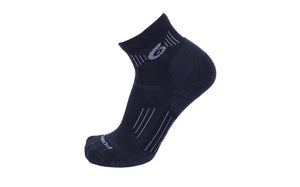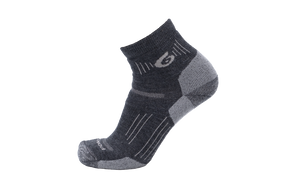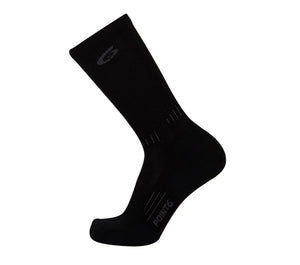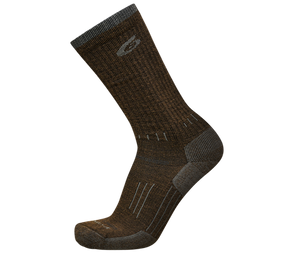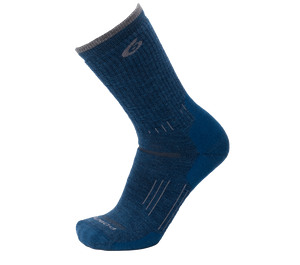The Summer Olympics are over, but Point6 Ambassador Natalie DeRatt is here to help you avoid Olympic withdrawals with some bobsled info to get you ready for the 2018 Winter Games!
---------------------------------------

When you think of bobsled, the characters of Cool Runnings may pop into your mind – battling freezing cold temperatures, learning corners in the bathtub and heroically carrying their crashed bobsled over the line. Although it’s not far off (it is blooming cold!), here’s what happens in the non-Hollywood version:
- There are two types of bobsledders – pilots and brakemen. The pilot does just that –pilot the sled (although they push too!), and brakemen are responsible for getting the sled up to speed at the start and then pulling the brakes at the bottom.
- There are two types of sled – a 4-person, and a 2-person (it’s not hard to work out which is which).
- You go fast. I mean really fast! Average temperatures are about 80 mph, with the fastest track in the world being Whistler (Canada). Reactions are everything, and most of the time pilots are just ‘guiding’ their sleds through the speeds of course and not ‘driving’ them.
- Tracks are about a mile – although some are longer and some are shorter. The all-natural track in St. Moritz is the longest track and takes about 70-75 seconds to get down.
- Crashes happen – because of the speeds, if you break a ‘line’ – e.g. the optimum route to get down the track – or just make a mistake – you could be on your head in a heartbeat! It’s not as bad as you think though, it just feels like you’re in a burning trash can being pulled beneath a truck… ;-) (PS – we all wear helmets and burn vest to prevent any ice burns! I also wear a mouth guard to protect those teefers.)
- G-forces are serious – all tracks are different, but some have forces up to 5 g’s! (G-force is effectively the force of gravity on an object during acceleration – 1 being normal life). Although you can’t tell watching, the athletes in the sleds are getting pinned to the bottom during high g’s. This normally occurs during long sweeping corners, and the trick is to breathe out and relax going through. BE the G!
- Sometimes you PEE a little! Don’t tell anyone I told you that! You know those g’s I was talking about?! Sometimes they take you by surprise (or maybe a big ol’ tap against the track wall does!) and your body isn’t ready. No-one minds though – it’s an occupational hazard!!!
- The sleds are HEAVY! A 2-man sled is about 400 lbs, and bobsledders move all their sleds themselves. Moving the sled is actually one of the hardest parts of sliding – that’s 200 lbs each to lift between two people (most of the time we’re just dragging them along on their bunks/sides though).
- It gets cold – this might be a given as we slide on ice, but temperatures have got down to as much as 40 below before at USA’s home track – Lake Placid! Luckily, I have never experienced these sub-freezing temps; in fact it was 70 degrees in Sochi, Russia in 2015 when we were there!
- Pilots learn tracks in their mind – because of the fact you can only slide during the colder months and it’s very tough on your body (we only take 2-4 runs a day), pilots learn new tracks by watching Point of View videos and pretending to drive down in their minds – ‘Mind Runs’. You may also see pilots doing this before sliding at the track – it sort of looks like they’re experimenting with Tai Chi.
- We lift in garages – unlike the glamorous sports and beautiful gyms you see on TV, a lot of our ‘dry land’ training is done wherever there is space. We normally turn parking garages into our weight rooms with weights we bring with us in our vans/crates, and scrape ice off the roads for sprints. It’s rare we get to use a nice warm gym during the whole season!

- A good pair of socks goes along way – when it’s 30 degrees out and you’re standing on the icy track in your slightly damp ice spikes, warm socks can change your life. Not only do they prevent your toes from disintegrating off your feet (there is no evidence this has ever happened), they also keep your body heat up and your ankles nice and loose for pushing. You lose most of your heat through your head, hands and feet, and so thick wooly socks are a MUST.
The Go-to socks for bobsled season:
- For Practice: The Snowboard / Wild Child OTC because they’re thick, warm and keep my legs cozy all the way to my knees. (I also like to turn my sliding suit ankles up for a pop of color in a world of icy grey!)
- For competitions: The Active Life Light Micro. They’re light and small, but still warm and comfortable. They also take up the least room in my ice spikes which feels good when you’re sprinting as fast as you can.
- For recovery: The Compression Ultra Light OTC. Bobsled is tough on your body so recovery is vital! These socks are a lifesaver as the compression helps push any lactic out of your muscles ready for the next day (what’s a day off?!).
- For lifting: The Active Life Lumberjack. Because we often lift in garages, you never get fully warm. These babies keep everything up to and over the ankle cozy and provide a great cushion for when we’re slinging around weights (why is everything in bobsled so heavy!?).
-
For the hotel: The Bolivian Stripe. I just like the pattern and they’re oh so soft.





